Vinyl Plank Flooring Installation
Fill in your details below - we'll reach out to schedule a free quote!
We will get back to you as soon as possible
Please try again later
Local Vinyl Plank Flooring Installers
At JD Flooring, we pride ourselves on providing high-quality vinyl plank flooring installation services to our customers.
Our team of experienced and licensed professionals are dedicated to ensuring that your new flooring looks great and lasts for many years to come.
In addition, all of our contractors are fully insured so you can rest assured that your investment is protected.
We understand that choosing new flooring can be a big decision, and we are here to help you every step of the way.
From helping you select the right product for your needs to providing a flawless installation, we will make sure the job is done right.
Contact us today to learn more about our vinyl plank flooring installation services.
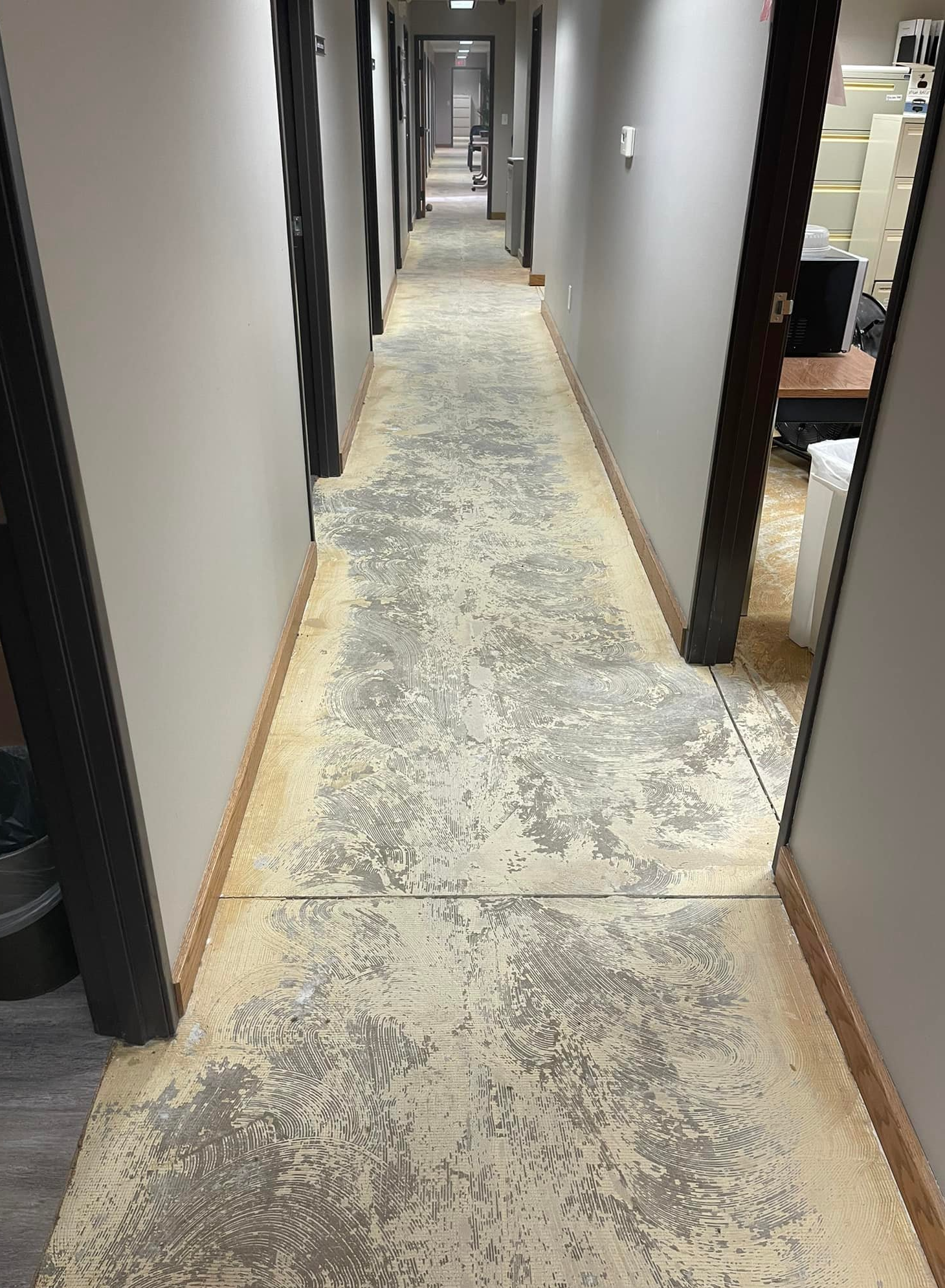
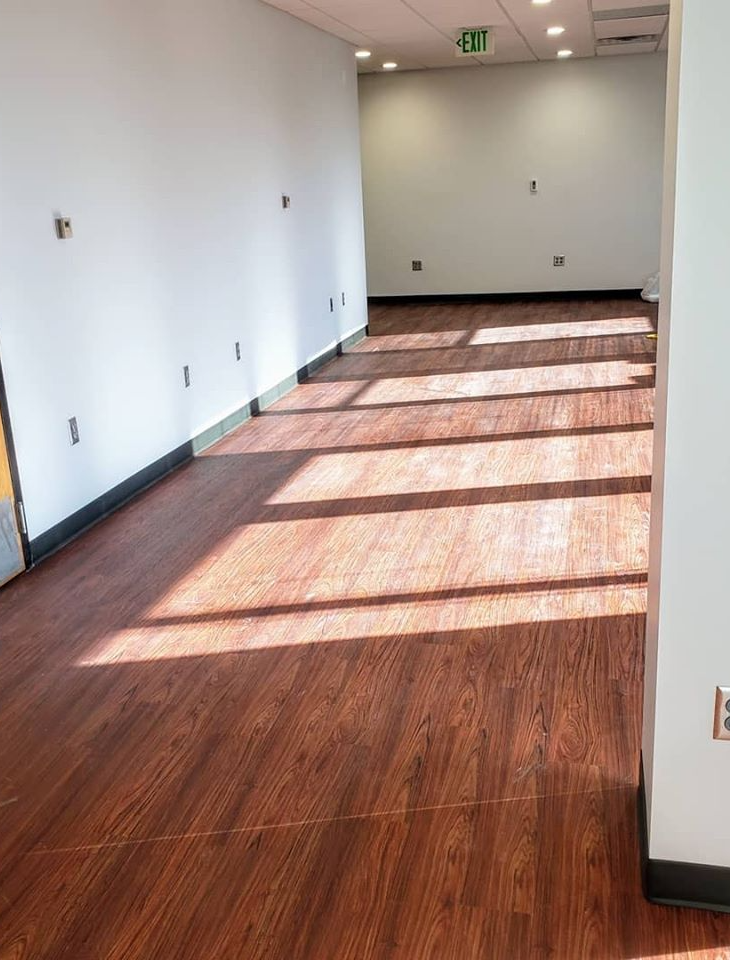
Vinyl Plank Flooring Installation Contractors
Our vinyl plank flooring installation contractors have expertise and experience in installing all different types of LVP and vinyl plank products.
We can help you choose the right product for your project, and we'll make sure it's installed correctly so that it looks great and lasts for years to come.
Vinyl plank floors are a great choice for busy families because they're durable and easy to care for. Plus, they come in a variety of colors and styles to match any decor.
If you're thinking about installing vinyl plank floors in your home, give us a call.
We'll be happy to answer any questions you have and provide a free estimate.
What is vinyl plank flooring?
Vinyl plank flooring is a type of flooring that consists of thin, interlocking planks.
It is made of a type of plastic called polyvinyl chloride (PVC), which is durable and easy to clean.
Vinyl plank flooring is a popular choice for both residential and commercial buildings because it is attractive, easy to install, and cost-effective.
The main disadvantage of vinyl plank flooring is that it can be slippery when wet.
In addition, it is not as durable as some other types of flooring, such as hardwood or tile.
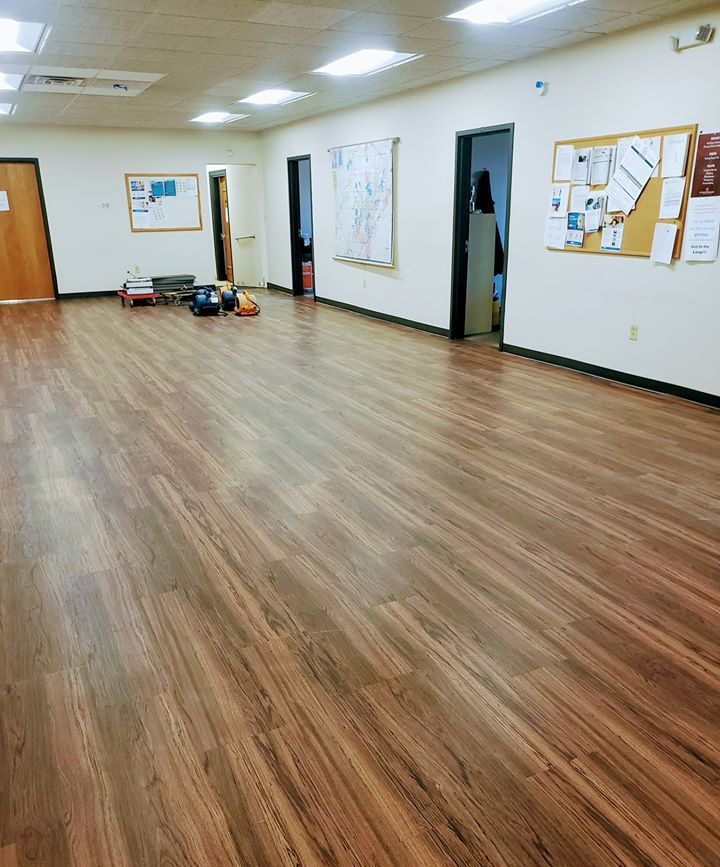
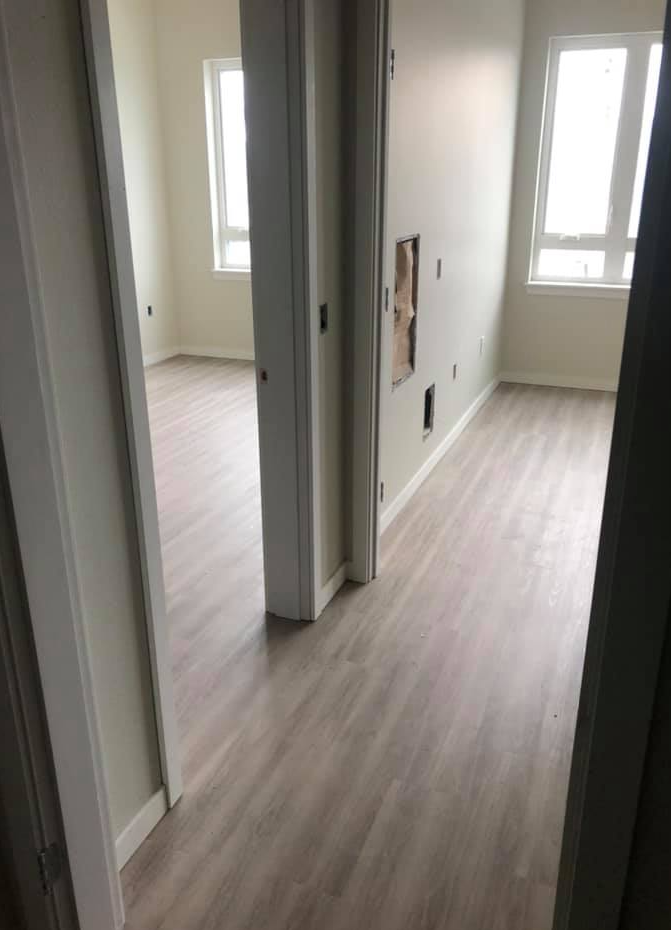
Benefits of Luxury Vinyl Plank Flooring
Luxury vinyl plank flooring (LVP) is a type of flooring that combines the best features of both luxury vinyl tile (LVT) and laminate flooring.
LVP is made with a wear layer, which protects against scratches, scuffs, and stains. Beneath the wear layer is a design layer that contains a printed image of wood grain, stone, or tile.
The image is protected by a clear film layer, and the entire plank is backed with a foam cushioning layer.
This construction makes LVP extremely durable and easy to maintain. In addition, LVP can be installed over most existing floors without the need for messy adhesives or special tools.
As a result, LVP is an ideal choice for busy families or anyone who wants the look of hardwood floors without the hassle.
Vinyl Plank Flooring Installation Process
Vinyl plank flooring installation is a very accessible process, but still requires many steps in order for it to be executed properly.
Consider the process we take and its many steps by reading along in the following section.
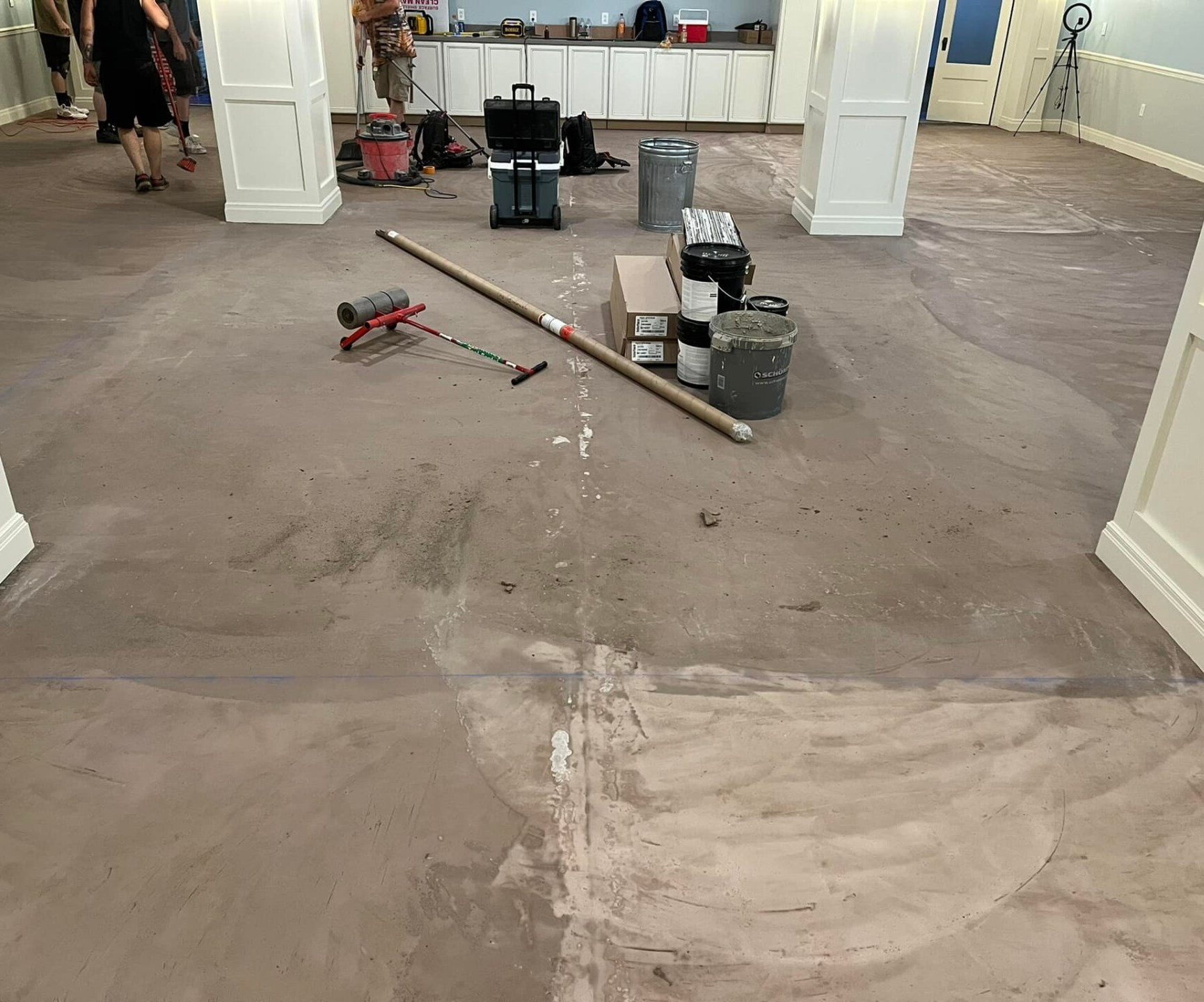
Plan the Flooring Layout
The first step in any vinyl plank flooring installation process is to plan the flooring layout.
This means that you should have already decided what product you'll be using and have a general idea of where the vinyl planks will be going.
In some cases, you may also need to remove existing flooring or make other preparations before starting the installation process.
Remove the Trim Moldings
Once the layout is planned, the next step is to remove any trim moldings or baseboards that will be in the way.
This includes both floor and wall moldings.
Be careful not to damage the moldings as you remove them so that they can be reused later.
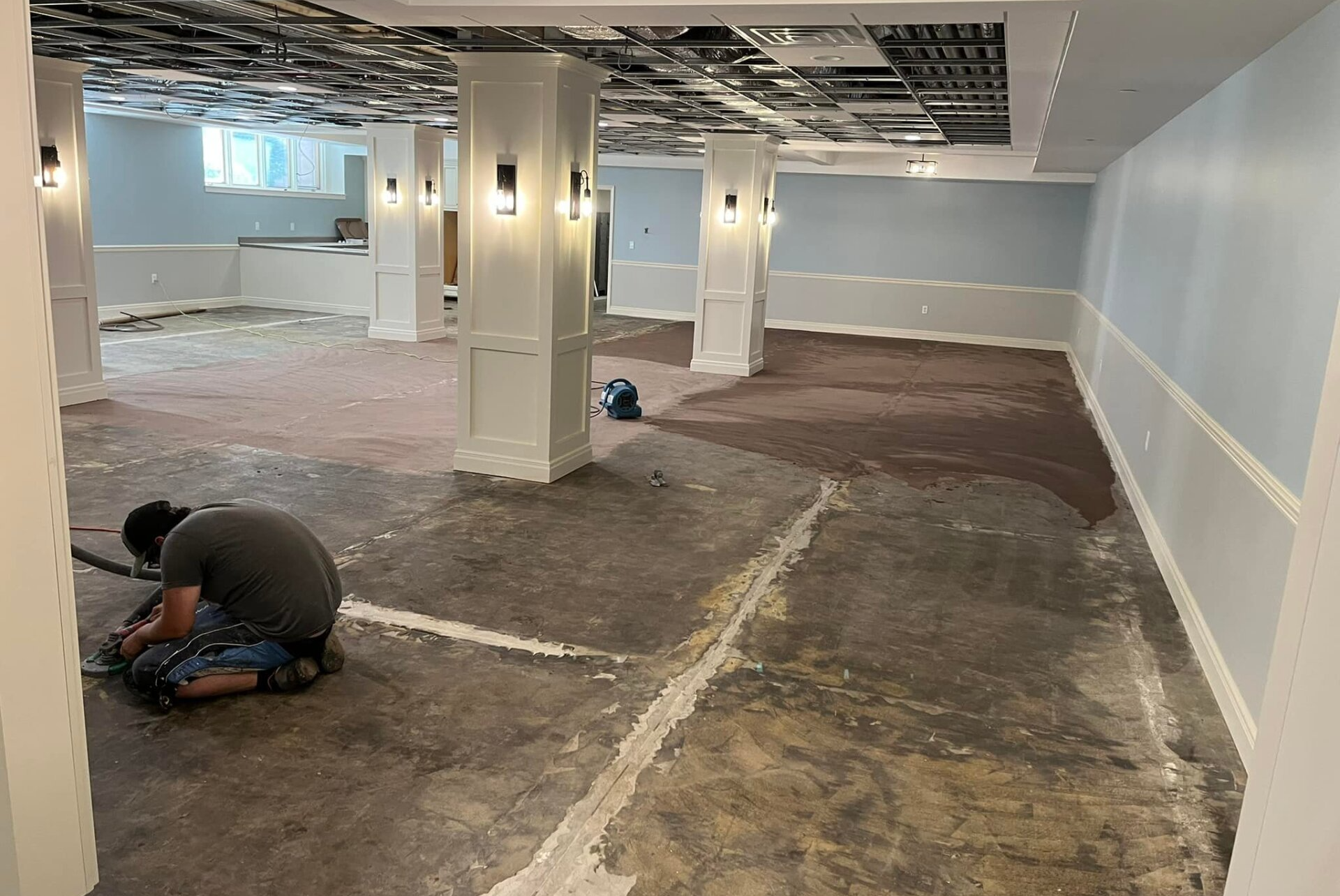
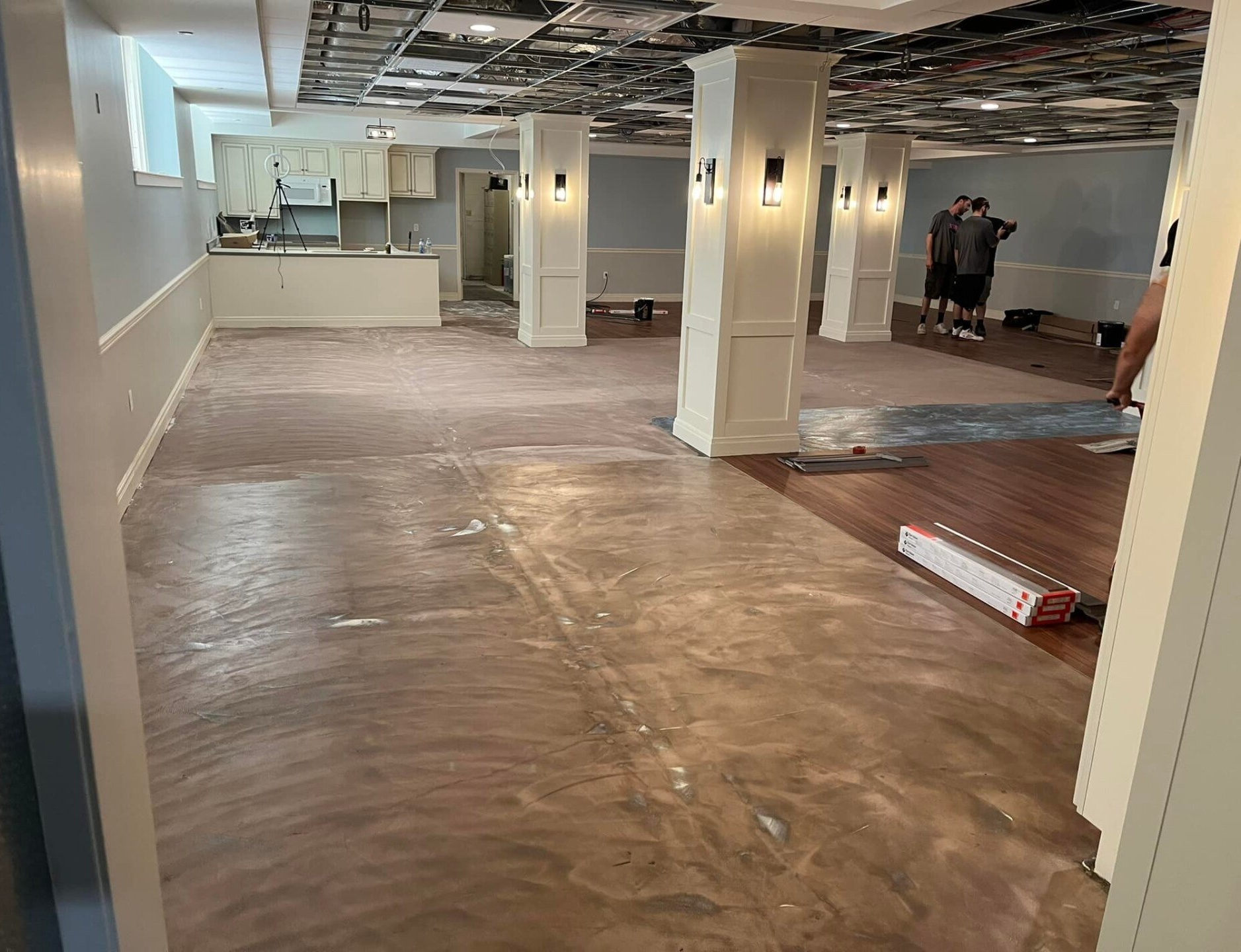
Prepare the Floor
After the moldings have been removed, the next step is to prepare the floor.
This includes cleaning the floor and making any necessary repairs.
Once the floor is clean and dry, you'll need to apply a self-leveling compound to any uneven areas.
This will ensure that your vinyl planks lay flat and stay in place once they're installed.
Install the Underlayment
The next step is to install the underlayment.
This is a thin layer of material that helps to dampen noise and protect the vinyl planks from moisture.
You'll need to unroll the underlayment and cut it to fit the floor using a utility knife.
Once the underlayment is in place, you can start installing the vinyl planks.
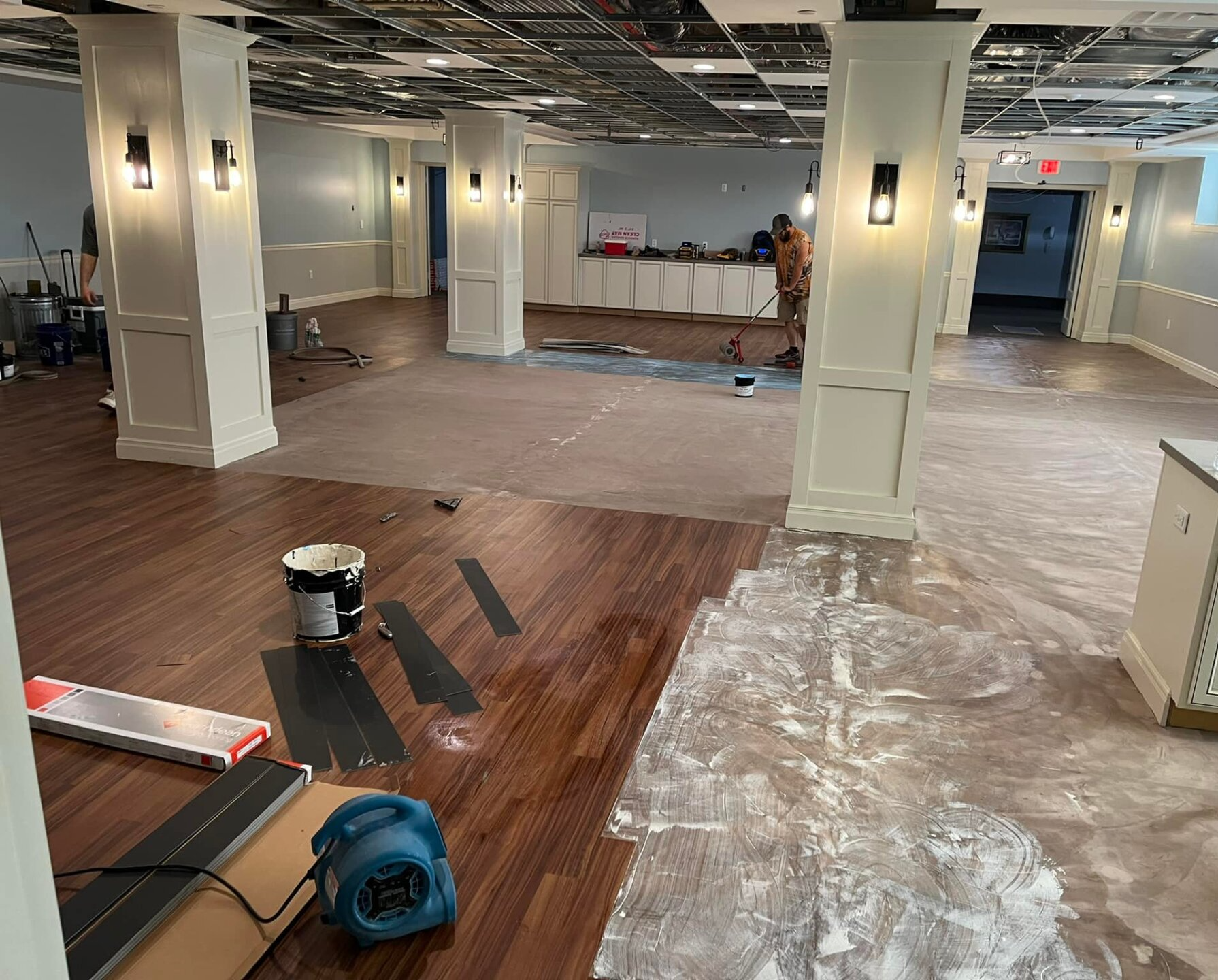

Test-Fit the First Row of Planks
Before you start installing the vinyl planks, it's a good idea to test-fit the first row.
This will help you determine the best way to cut the planks so that they fit snugly against the walls and around obstacles.
Once you're happy with the fit, you can mark the planks for cutting and begin installing them.
Cut Planks to Size
To cut the vinyl planks to size, you'll need a utility knife and a straightedge.
First, mark the plank for cutting using a pencil.
Then, use the straightedge to score the plank along the line.
Finally, snap the plank in two along the score line and remove any rough edges with the utility knife.
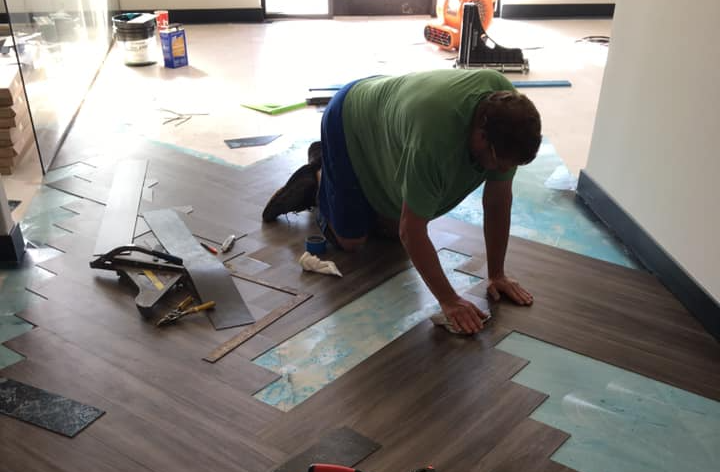

Connect the Flooring Planks
After the planks have been cut to size, the next step is to connect them.
Most luxury vinyl plank flooring products come with interlocking edges that simply snap together.
Once the planks are connected, you can start installing them on the floor.
Cut and Fit the Final Planks
Once all of the full-sized planks have been installed, you'll need to cut and fit the final row of planks.
Again, use a utility knife and straightedge to mark and cut the planks.
Be sure to leave an expansion gap along the walls to allow for contraction and expansion of the vinyl planks.
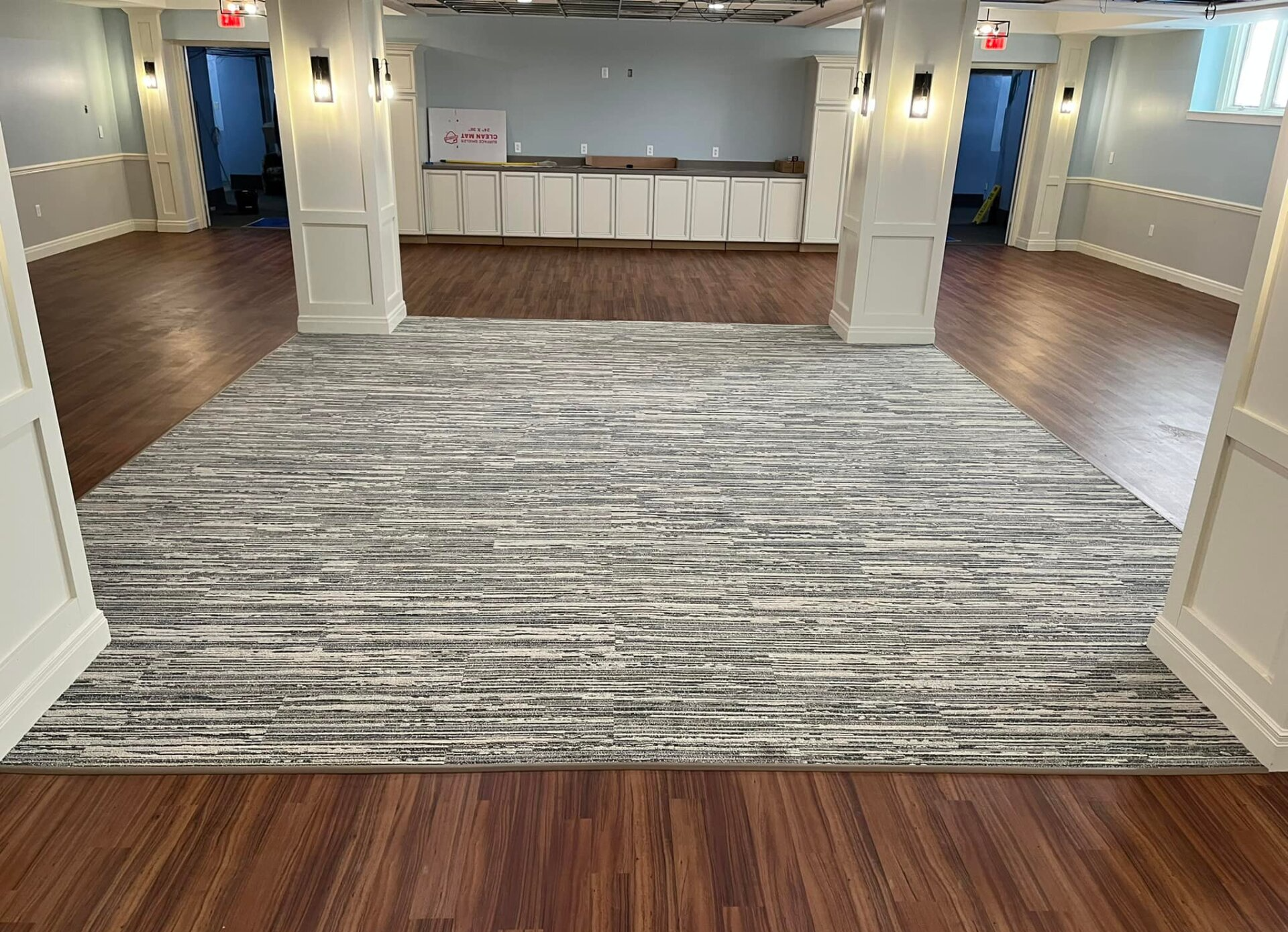
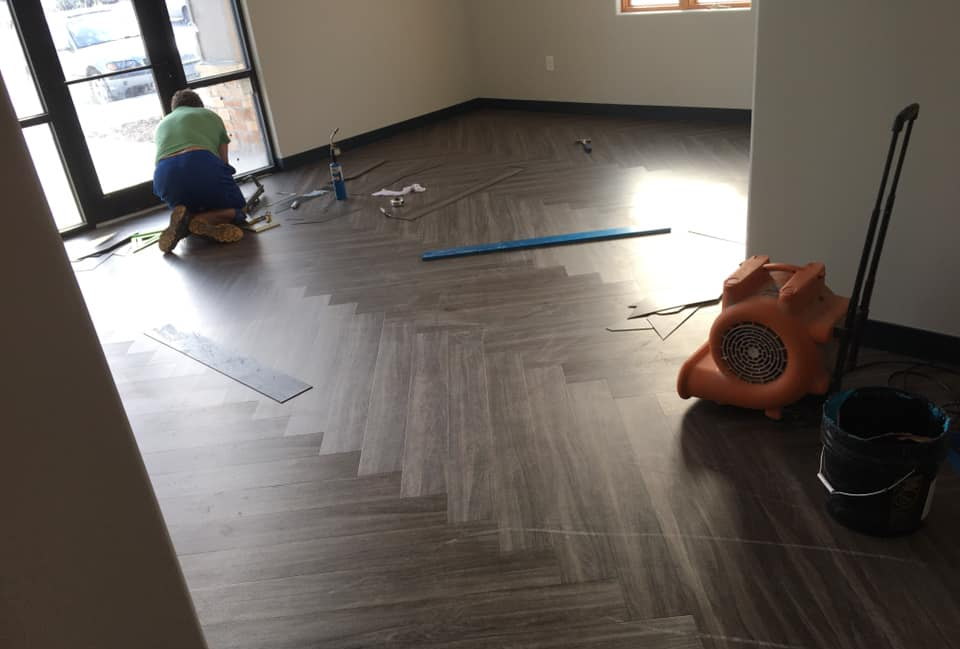
Reinstall the Trim Moldings
After the flooring has been installed, you can reinstall the trim moldings.
This includes both floor and wall moldings.
Be sure to use a Hammer and Nails or screws to secure the moldings in place.
Finish Up
The final step is to clean up any dust or debris left behind from the installation process.
Once the floor is clean, you can enjoy your new vinyl plank flooring!
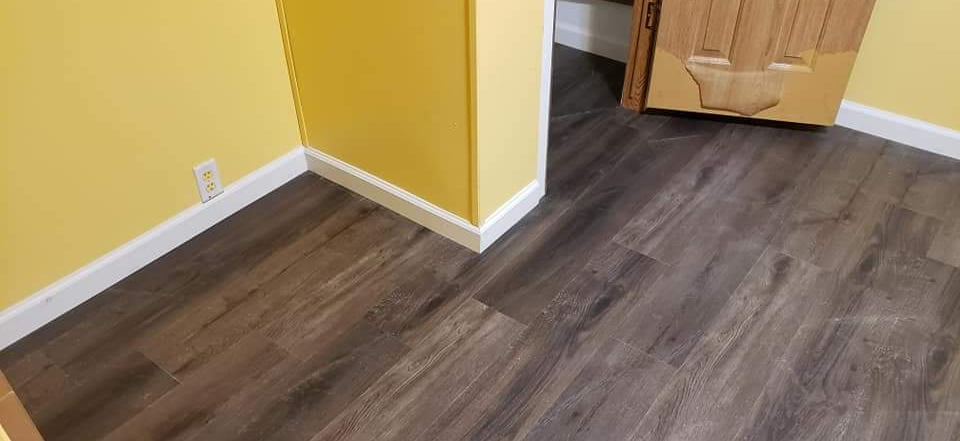
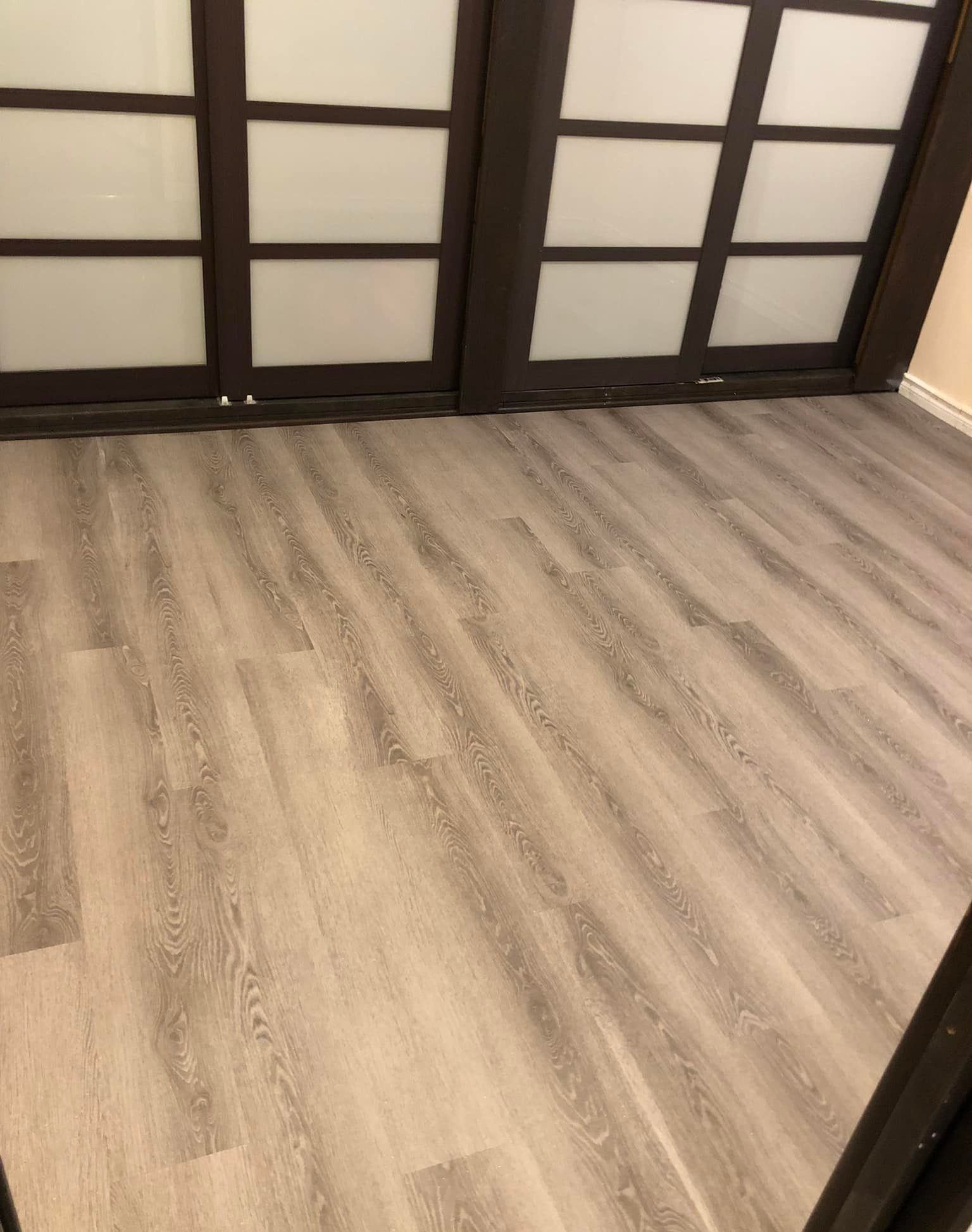
How to Maintain Vinyl Plank Flooring
Vinyl plank flooring is a popular choice for homes and businesses for a number of reasons. It is durable, easy to clean, and provides a wide range of design options.
However, vinyl plank flooring requires some special care to keep it looking its best. Here are a few tips for maintaining your vinyl plank flooring:
- Sweep or vacuum regularly: This will help to remove dirt, dust, and other debris that can build up on the surface of the floor and cause scratching.
- Use door mats: Placing door mats at all entrances will help to reduce the amount of dirt and debris that is tracked into the building. Be sure to choose mats that have a soft, non-abrasive surface.
- Wipe up spills immediately: Spills can cause staining or damage the finish of the floor. To prevent this, wipe up spills as soon as they happen.
- Use protective pads on furniture: Heavy furniture can dent or scratch vinyl plank flooring. To protect your floors, place felt pads or similar products under the legs of all furniture.
- Follow manufacturers instructions: Be sure to follow the specific care and cleaning instructions provided by the manufacturer of your vinyl plank flooring. This will ensure that you do not void the warranty.
Following these steps is a great way to insure that your vinyl plank flooring lasts for many years.

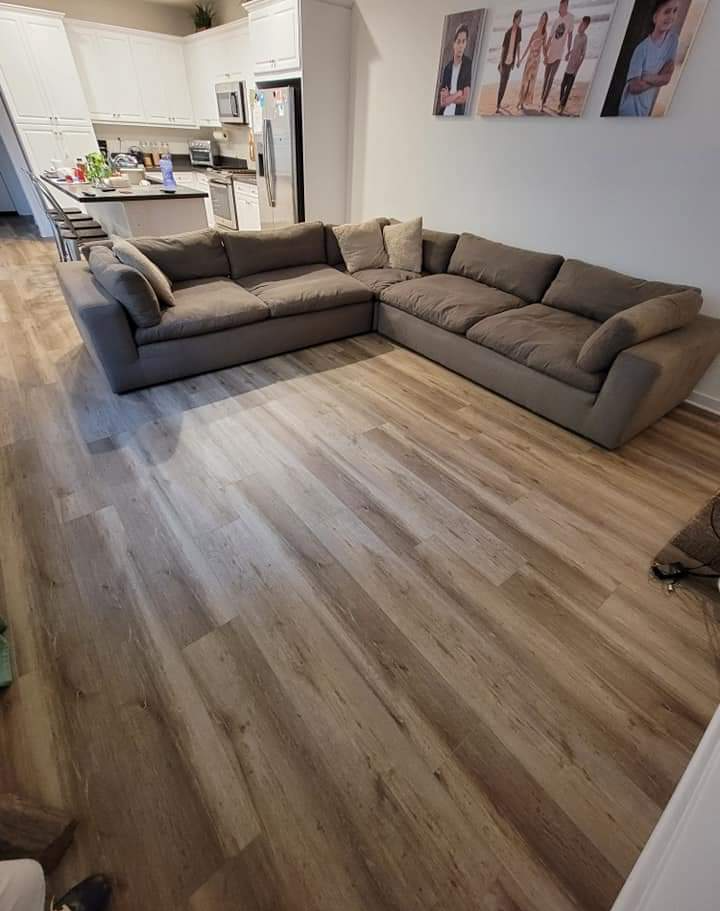
How Much Does Vinyl Plank Flooring Installation Cost?
There are a number of factors that can impact the cost of installing vinyl plank flooring. The most important factor is the size of the room.
Larger rooms will require more material and take longer to install, resulting in a higher overall cost. The type of vinyl plank flooring also plays a role in the price.
More expensive options will generally be made from higher-quality materials and can include features like built-in underlayment or a protective finish.
The complexity of the installation can also affect the cost.
If the room has numerous obstacles or difficult corners, it will take longer to install and will likely cost more.
Vinyl Plank Flooring Installation FAQs
What underlayment should I use for vinyl plank flooring?
When installing vinyl plank flooring, it is important to choose the right underlayment. This material is installed between the subfloor and the vinyl planks, and it serves several purposes.
Underlayment provides cushioning, making the floor more comfortable to walk on. In addition, it helps to deaden sound, preventing footsteps from echoing through the house.
Underlayment also protects against moisture, preventing the growth of mold and mildew. When choosing an underlayment for vinyl plank flooring, look for a product that is thin yet durable.
Many products are specifically designed for use with vinyl plank flooring, and they can be found at most home improvement stores.
Is it better to glue or float vinyl plank flooring?
Glue-down installation is typically more time-consuming and expensive, but it also provides a stronger bond between the flooring and the subfloor.
This can be beneficial in areas that experience a lot of foot traffic or other forms of wear and tear.
Floating installation, on the other hand, is generally quicker and easier, and it doesn't require any adhesive. This makes it a good choice for DIY projects.
However, floating floors can be more susceptible to damage from water or temperature changes.
Ultimately, the best installation method for your vinyl plank flooring will depend on your specific needs and preferences.
How long does glue down vinyl plank flooring last?
The answer depends on a number of factors, including the quality of the product, the level of foot traffic, and how well it is maintained.
In general, though, glue-down vinyl plank flooring can last for 10-20 years with proper care. With that said, it is important to choose a reputable brand and to follow the manufacturer's instructions for installation and cleaning.
By taking these steps, you can help ensure that your glue-down vinyl plank flooring will provide years of use.
What happens if you don't put underlayment under vinyl plank flooring?
The simple answer is yes, you should always put an underlayment under vinyl plank flooring. There are several reasons for this.
First, an underlayment provides additional cushioning, making the floor more comfortable to walk on.
Second, it helps to reduce noise, both from foot traffic and from objects being dropped on the floor.
Third, it can help to protect the vinyl plank flooring from damage, such as scratches and dents.
Overall, an underlayment is an important part of the vinyl plank flooring installation process, and skipping it can lead to problems down the road.
Do you need a subfloor for vinyl plank flooring?
In most cases, vinyl plank flooring can be installed directly over an existing subfloor. However, there are some situations where it may be necessary to install a new subfloor first.
For example, if the existing subfloor is damaged or uneven, installing a new subfloor can help to ensure a smooth, level surface for the vinyl planks.
Additionally, if moisture is an issue, installing a moisture barrier between the subfloor and the vinyl planks can help to prevent damage.
Ultimately, whether or not you need to install a new subfloor will depend on the specific situation. However, in most cases, it is not necessary.
What are the problems with vinyl plank flooring?
One issue is that the planks can be susceptible to indents and scratches. This can be a problem if you have pets or heavy furniture. In addition, the seams between the planks can become visible over time.
This is more likely to happen if the planks are not installed correctly or if they are not properly maintained.
Finally, vinyl plank flooring can be slippery when wet, which can be a safety hazard.
Overall, vinyl plank flooring is a good option for many homeowners, but it is important to be aware of the potential drawbacks.
Why is my vinyl plank flooring separating?
One possibility is that the planks were not properly glued down to begin with. If the adhesive wasn't applied evenly or if it wasn't given enough time to dry, the planks can start to come up.
If too much space was left between planks during the flooring installation, that can also cause a floor separation issue. Another possibility is that the temperature in your home is too high.
Extreme heat can cause the adhesive to break down, causing the planks to separate.
Finally, if you have pets or children, they may have accidentally pulled up a plank while playing or running around.
How long does it take to install vinyl plank flooring?
There are a few factors that can affect the timeline, such as the size of the room and the type of subfloor you have.
If you're working with a large room or an uneven surface, it may take longer to install your vinyl plank flooring.
Likewise, if you're installing vinyl plank flooring over an existing floor, you'll need to factor in extra time for cleanup and preparation.
Overall, though, vinyl plank flooring is a wuick and easy way to give your home a fresh new look.
What is the difference between lvp and vinyl plank?
Both offer a durable, easy-to-clean option for busy families, but there are a few key differences between the two.
LVP is made from multiple layers of vinyl that are fused together, while vinyl plank is a single layer of vinyl.
LVP is also typically thicker and more durable than vinyl plank.
As a result, LVP is often more expensive than vinyl plank. However, both options can provide a beautiful, low-maintenance floor for your home.
How do you determine which direction you should install vinyl plank flooring?
The direction of the planks can have a big impact on the overall look and feel of the floor, so it's important to choose a direction that will work well with the rest of your décor. There are a few things to keep in mind when choosing a direction for your vinyl plank flooring.
First, take a look at the size and shape of the room. If the room is long and narrow, you'll want to install the planks parallel to the longest wall. This will create the illusion of a wider space. If the room is square or rectangular, you can install the planks in either direction.
Second, take a look at the furniture in the room. If you have large pieces of furniture, you'll want to install the planks perpendicular to those pieces. This will help to break up the visual mass of the furniture and make the room appear more spacious.
Finally, consider your own personal style. Some people prefer clean, linear lines, while others prefer a more organic look. Choose a direction that will give you the look you want for your new floor.
Reach Out For a Free Quote
Send us a message using the form below, and we’ll get back to you as soon as we can.
We will get back to you as soon as possible
Please try again later
Copyright © 2015-2022 JD Flooring Installers | All rights reserved
Contractor Website by Curated Leads
